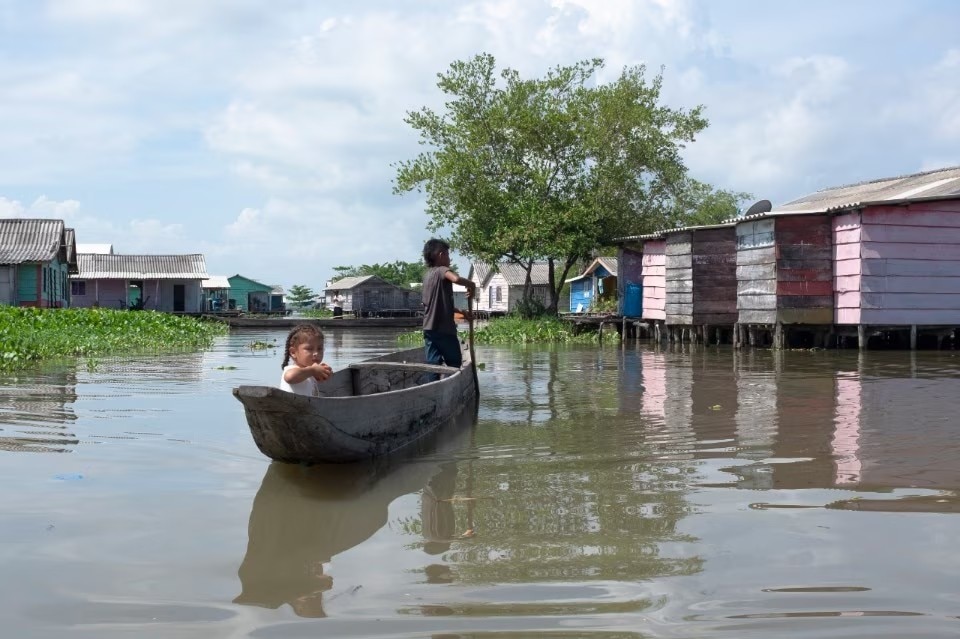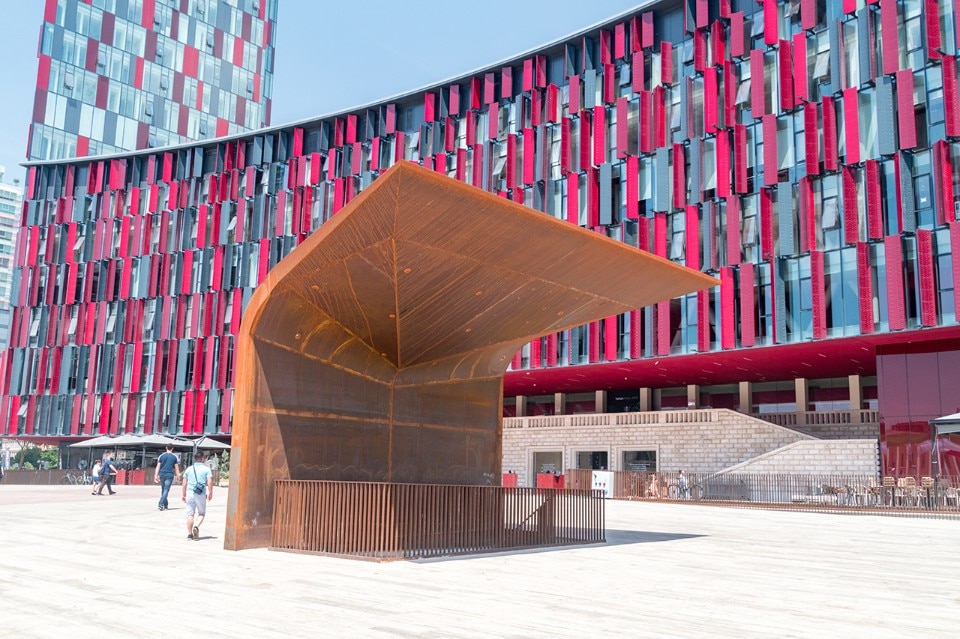
Sahil: G.T.DESIGN's Eco-conscious Design
At Milan Design Week 2025, G.T.DESIGN will showcase Sahil, a jute rug collection by Deanna Comellini. This project masterfully blends sustainability, artisanal craftsmanship, and essential design, drawing inspiration from nomadic cultures and celebrating the inherent beauty of natural materials.
- Sponsored content
Domus is a magazine that reflects the present. With nearly a hundred years of history, the incredible authority it has gained, and its aura almost detached from everyday trivialities, it is easy to misunderstand its role. While its archives are studied and occupy shelves in university libraries worldwide, Domus is not a history book. It has documented a vast array of topics, striking a fascinating balance between the micro and macro as it transitioned from newsstands to smartphone screens (where you might be reading this article now, ed.).
Among the many subjects Domus has consistently explored are places, and this tradition continues today. Below, we’ve compiled some of the most intriguing stories: from the increasingly mainstream Berlin, where its dying clubs and squats are becoming mass museums, to the cities of Colombia, the architecture of Albania, and many other discoveries. We invite you to join Domus on this special journey.
The Domus guide to Berlin’s clubs and their architecture

In March of this year, Berlin’s techno culture became part of UNESCO’s intangible heritage, which protects rituals, traditions, and festivities from all over the world. A decision that has not failed to arouse some perplexity, but for which there are good reasons. Because while there is no doubt that House and Techno were born in the 1980s from the ingenuity of the African-American communities of Chicago and Detroit, it is equally undeniable that in Berlin electronic music encountered a historically unique environment, which favoured its proliferation and evolution into a mass movement. Read more
Who is destroying the art deco architecture of the most dangerous city in Colombia?
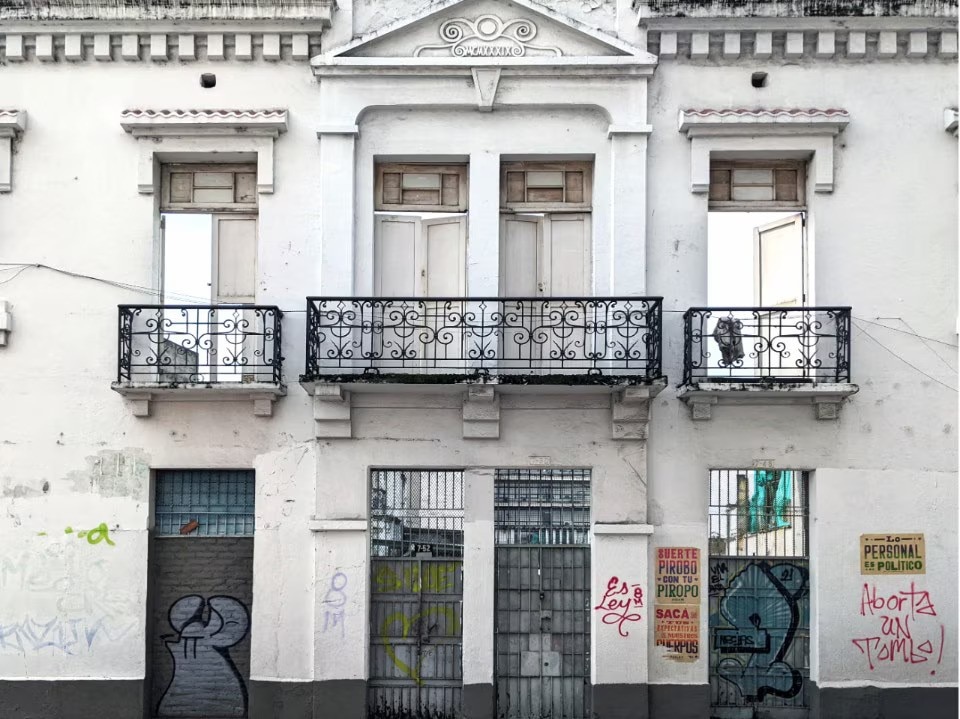
There are many ways to destroy a city, the most effective way being to destroy its architecture. And there are also many ways to destroy architecture, bombing a city back to the stone age being merely the most dramatic. Equally effective and much less news-worthy is the demolition of large swaths of old buildings under the guise of urban renewal; neglect and abandonment on the part of their owners; or gutting, sub-dividing and converting residential buildings into commercial space. In Cali, Colombia, all such kinds of destruction are happening at the same time. Read more
5 cities of the future in Africa, the world’s youngest continent
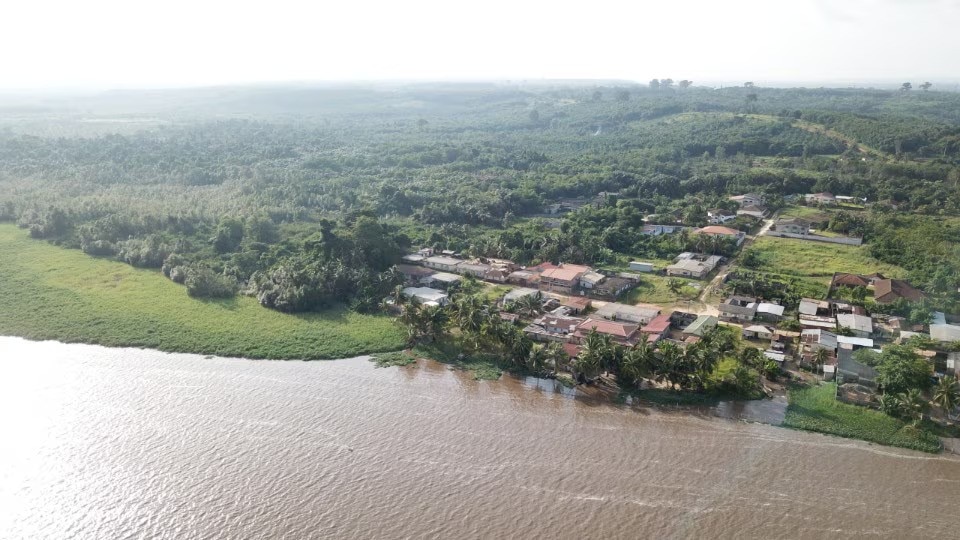
British actor Idris Elba recently announced an agreement with the government of Sierra Leone to develop Sherbro Island in the Gulf of Guinea. The plan is to build an environmentally friendly, energy self-sufficient smart city. Together with his partner and friend, Siaka Stevens, grandson of Sierra Leone’s former president, Elba envisions creating a kind of African Hong Kong off the coast of the west African country. This city could house up to a million people and attract foreign entrepreneurs and diaspora talent. Although there is no clear budget or construction timetable, the developers aim to open the first tourist facilities within the next five years. Read more
A visit to the authentic water world of Colombia’s Venice
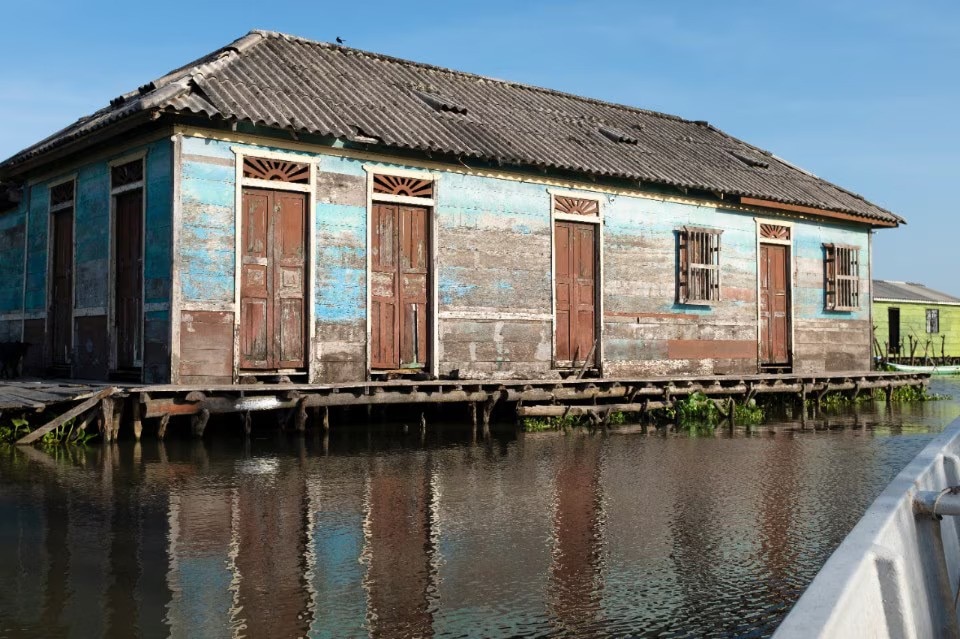
On Google Maps, the town of Nueva Venecia appears to be located on an island in the middle of a large lagoon. In fact, though, there is no island as there is no land there at all. With a current population of 3,000 people, Nueva Venecia consists of 400 houses clustered together seemingly “floating” above water (in fact, they are propped up on thick wooden stakes sunk deep into the bed of the shallow lagoon). Read more
How Europe’s most famous squat was transformed into a hyper-chic museum
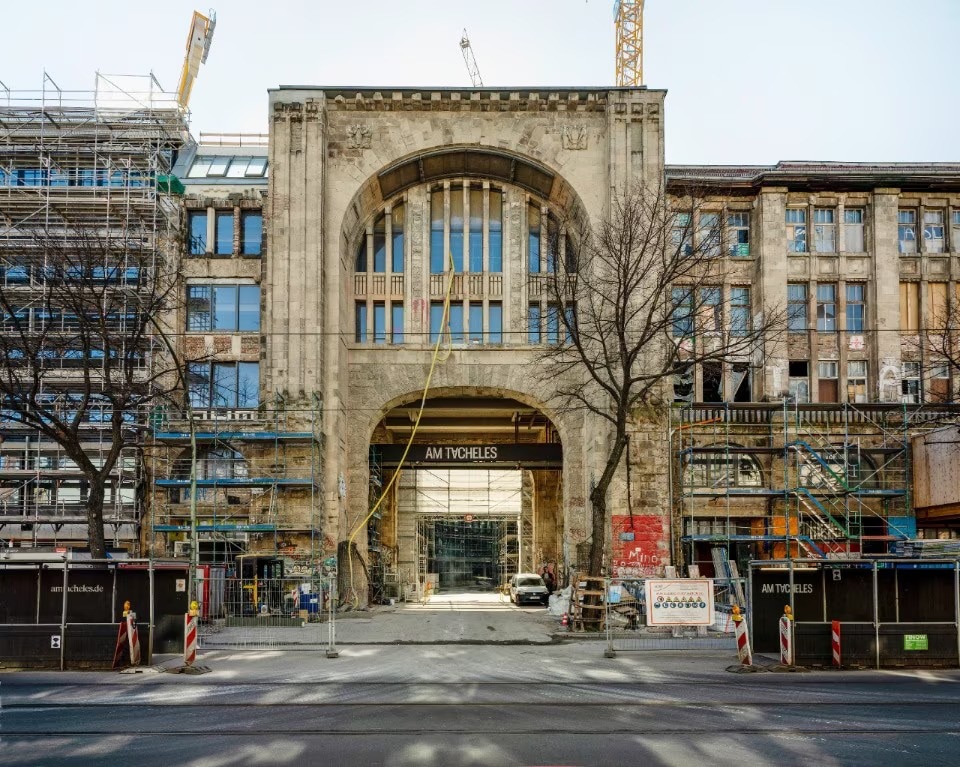
There are places that encapsulate the spirit of an era more profoundly than others, evolving into enduring symbols. In the early 1990s Berlin, one such place undoubtedly was Tacheles: a vast turn-of-the-century shopping arcade – or rather, what remained of it after East German authorities commenced its demolition – then occupied in 1990 by a vibrant handful of activists and artists, it later transformed into an alternative icon of the capital. The story came to an undistinguished close in 2012, with a subdued eviction and unexpectedly feeble resistance. Read more
How the Barbican became one of London’s most popular places
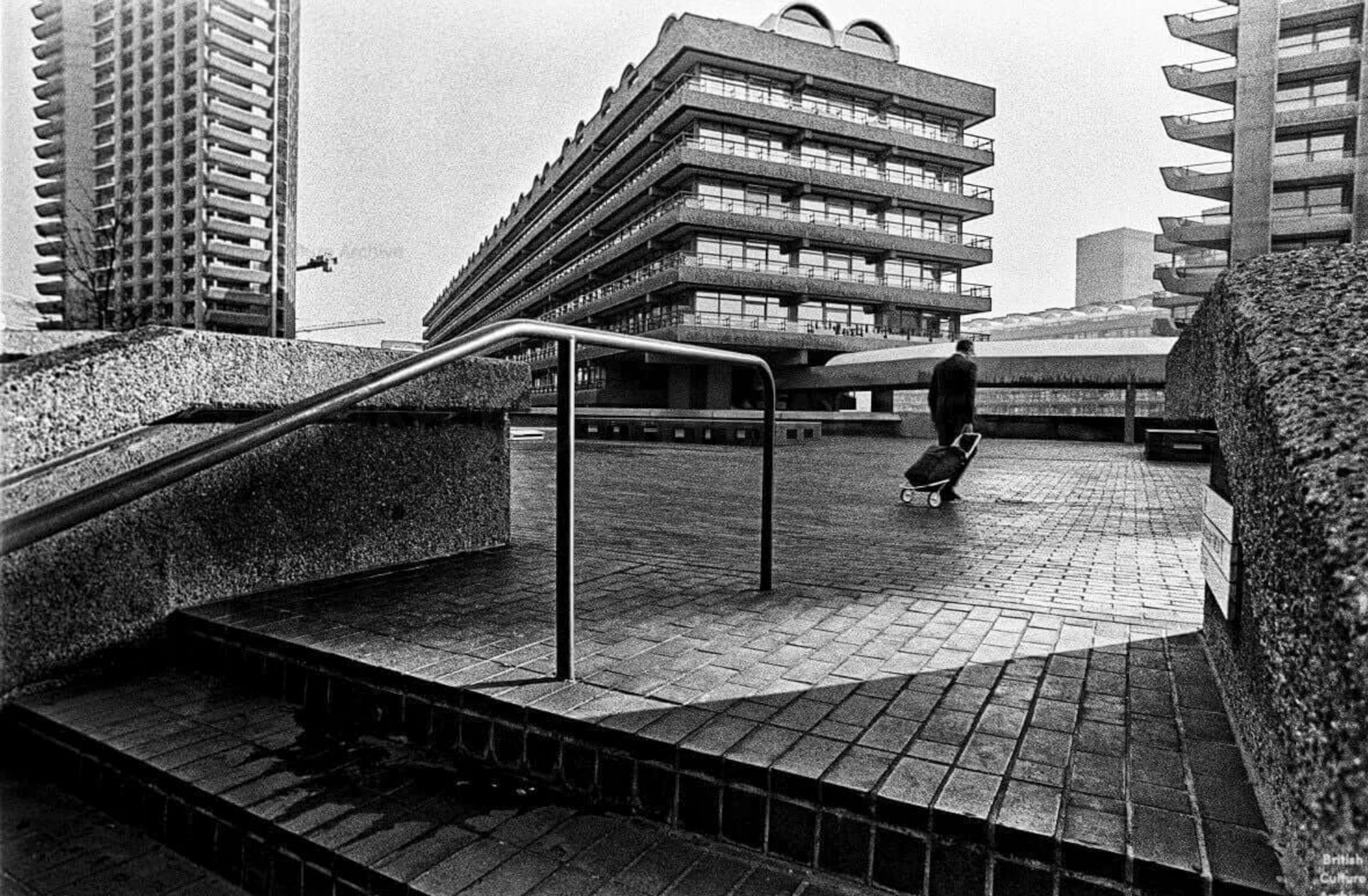
 View gallery
View gallery
In 1975, photographer David Hoffman, then in his 20s, visited the Barbican Estate. Like many Londoners of his generation, he was angered by the casual way in which established communities were being ripped up and their history erased in the pursuit of post-war urban renewal. He saw nothing to encourage him in the Barbican: “A massive, imposing structure seemingly dropped from the sky, the Barbican typified a wider uncaring and absolute power over our environment. Its great weight, the unassailable concreteness of it, the way that it resembled a walled city with whole areas locked and gated against outsiders – all these came together to say ‘You are no part of this’. It was the very opposite of welcoming; reeking of wealth, only navigable by those who knew the secrets of its confusing mazes and owned the right keys.” Read more
The remarkable architecture of communist Albania and its revival

 View gallery
View gallery

1. Pyramid of Tirana – Pirro Vaso, Klement Kolaneci, Pranvera Hoxha e Vladimir Bregu (1988), MVRDV (2018)
Built in 1988 as a celebratory museum after the death of the historic leader, the Tirana Pyramid is perhaps one of the capital's most recognizable pieces of architecture. Faced with numerous proposals to demolish the building, in 2018 the Pyramid underwent a radical renovation project signed by MVRDV. The new project transformed the former mausoleum into an IT center for young people, hosting cafes, studios, offices for start-ups, and workspaces. Today, a series of modular and polychrome elements are placed inside and outside the structure, giving a new look to the architecture itself. MVRDV inserted stone staircases alongside these elements to surmount the reinforced concrete bands that marked the external shell. These run along the volume's surfaces to the top, while glass bands punctuate and illuminate the large internal void.
© Ossip van Duivenbode

1. Pyramid of Tirana – Pirro Vaso, Klement Kolaneci, Pranvera Hoxha e Vladimir Bregu (1988), MVRDV (2018)
© Ossip van Duivenbode

1. Pyramid of Tirana – Pirro Vaso, Klement Kolaneci, Pranvera Hoxha e Vladimir Bregu (1988), MVRDV (2018)
© Ossip van Duivenbode

2. Qender Zjarri and Pike Zjarri bunker – Josif Zagali
The construction of anti-atomic bunkers, and for the defense of the Albanian territory, because of a possible external attack, marked the spread of countless prefabricated structures that today continue to dot the Albanian territory. Bunkers are built everywhere - on the roadsides, in the open countryside, in the middle of cemeteries, or on the sea coasts - and fall into two main typologies. The Qender Zjarri, small bunkers entirely prefabricated and transportable, are designed as military garrison points for one or two people, 2 meters and 10 meters high, 3 meters in diameter; they have a small space covered by a reinforced concrete cap where you can shoot any enemies. The second type, Pike Zjarri, is considerably larger in size and can, therefore, be assembled by joining several prefabricated elements, thus giving rise to caps of 8 meters in diameter and up to 5 meters in height.
Photo by Thomas on AdobeStock
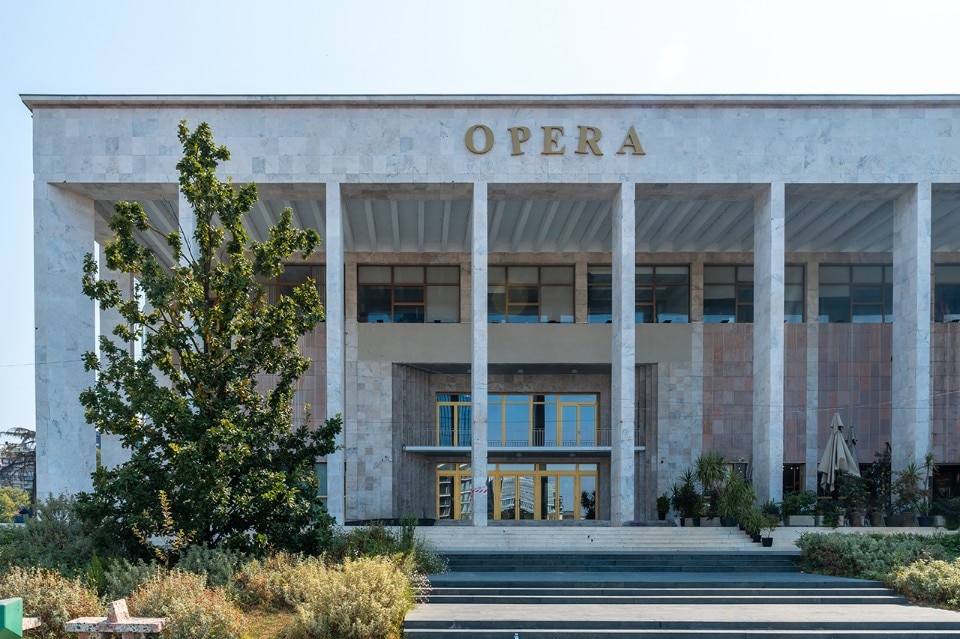
3. Palace of Culture of Tirana – / (1958-1963)
Erected in the central square of Tirana at the direct request of Enver Hoxha, it saw the first stone laid by Nikita Khrushchev, general secretary of the Communist Party of the Soviet Union at the time. Here, the building that houses the Opera and Ballet has the typical stylistic features of Stalinist buildings in its architecture. A portico is excavated and supported by narrow concrete blades covered in stone in the main facade of the compact shape that defines the structure. The general rigor of the architecture then sees a light podium that raises it from the ground, placing it in dialogue with the large void of the square in front, imposing itself within the urban scenario of the capital.
Photo by unai on AdobeStock

4. National Museum of Fine Arts of Tirana – / (1974)
Having some similarities with the Palace of Culture, the National Museum of Fine Arts of Tirana is a monumental building with characters that are also close to the late modern international language.
In the definition of the external facades, the structure sees a dry and austere language. Here, the perimeter wall is fragmented, leaving space for the windows punctuating and giving rhythm to the facade. The volume, therefore, is broken down between the external skin and the contained space, where the opaque masses of the national gallery appear to be heavy monumental blocks.
Photo by Sailko on wikimedia commons

4. National Museum of Fine Arts of Tirana – / (1974)
Phoyo by ErtonKashta on wikimedia commons

5. National History Museum of Tirana – Sokrat Mosko, Enver Faja, Nina Shehu, Petraq Kolevica (1981)
Built at the end of Enver Hoxha's regime, the National History Museum of Tirana is part of those buildings intended to represent both a monument to the Albanian people and a demonstration of the regime's strength.
Architecture sees its expressiveness in the play of volumes. The entrance, raised from the street level, is surmounted by a projecting body with a mosaic dedicated to the history and value of the Albanians. The base, covered in dark stone, recedes from the volume, thus leaving the upper body as the main urban presence. The surface is then punctuated by vertical windows, which design the only elements of discontinuity on the facade.
Photo by sforzza on AdobeStock

5. National History Museum of Tirana – Sokrat Mosko, Enver Faja, Nina Shehu, Petraq Kolevica (1981)
Photo by unai on AdobeStock

6. Palace of Congresses of Tirana – Klement Kolaneci (1986)
Built as a palace for the workers' party congresses, the building seeks a visionary declination of the language of socialist architecture. The massive volumes here become glass spaces, and the projecting body that surmounts the entire work becomes plastic, curving and moving the composition. The entrance, raised and reachable by a small staircase, is framed by two monumental pillars that generate support ribs for the projecting body in their vertical development.
Strongly in tune with the language of the Pyramid of Tirana, the composition of the Congress Palace's overhangs, pillars and towering elements presents itself as a continuous dialogue between heaviness and lightness.
Photo by milosk50 on AdobeStock

6. Palace of Congresses of Tirana – Klement Kolaneci (1986)
Photo by Robson90 on AdobeStock

7. Vlorë railway station - Arben Meksi (1983-1985)
One of the actions promoted by Enver Hoxha's regime was the construction of the Albanian railway system, which, until the mid-1940s, was still absent. This promotion, therefore, also led to the construction of railway stations in the main cities of the State. In Vlorë, the third most populous city in Albania, there is the old station, which elegantly reproduces the synthetic features of the regime's architecture. The stone base opens up to the street with a canopy, the crowning expands and takes on a plastic, almost decorative shape. Finally, the body of architecture proposes a windowed theory in which a sculptural work is inserted.
Photo by Jan Pešula on wikimedia commons

8. Arena Kombëtare – Gherardo Bosio/Marco Casamonti, Archea Associati (1946/2019)
The capital's main stadium follows a rather singular story. Its construction began under the fascist occupation, designed by the Italian architect Gherardo Bosio. It was then completed following the liberation, and under the Hoxha regime, it saw various expansion works. In the 2000s, however, a heavy renovation changed heavily the old stadium, which was almost completely demolished to make room for the new forms designed, once again, by an Italian firm, Marco Casamonti's Archea Associati studio. What remains of the rationalist trace is the only entrance, which monumentally introduces the new stadium. In this work, the stratifications, and perhaps the contradictions, of an architecture that transforms a constantly changing nation are thus condensed.
Photo by sports photos on AdobeStock

1. Pyramid of Tirana – Pirro Vaso, Klement Kolaneci, Pranvera Hoxha e Vladimir Bregu (1988), MVRDV (2018)
Built in 1988 as a celebratory museum after the death of the historic leader, the Tirana Pyramid is perhaps one of the capital's most recognizable pieces of architecture. Faced with numerous proposals to demolish the building, in 2018 the Pyramid underwent a radical renovation project signed by MVRDV. The new project transformed the former mausoleum into an IT center for young people, hosting cafes, studios, offices for start-ups, and workspaces. Today, a series of modular and polychrome elements are placed inside and outside the structure, giving a new look to the architecture itself. MVRDV inserted stone staircases alongside these elements to surmount the reinforced concrete bands that marked the external shell. These run along the volume's surfaces to the top, while glass bands punctuate and illuminate the large internal void.
© Ossip van Duivenbode

1. Pyramid of Tirana – Pirro Vaso, Klement Kolaneci, Pranvera Hoxha e Vladimir Bregu (1988), MVRDV (2018)
© Ossip van Duivenbode

1. Pyramid of Tirana – Pirro Vaso, Klement Kolaneci, Pranvera Hoxha e Vladimir Bregu (1988), MVRDV (2018)
© Ossip van Duivenbode

2. Qender Zjarri and Pike Zjarri bunker – Josif Zagali
The construction of anti-atomic bunkers, and for the defense of the Albanian territory, because of a possible external attack, marked the spread of countless prefabricated structures that today continue to dot the Albanian territory. Bunkers are built everywhere - on the roadsides, in the open countryside, in the middle of cemeteries, or on the sea coasts - and fall into two main typologies. The Qender Zjarri, small bunkers entirely prefabricated and transportable, are designed as military garrison points for one or two people, 2 meters and 10 meters high, 3 meters in diameter; they have a small space covered by a reinforced concrete cap where you can shoot any enemies. The second type, Pike Zjarri, is considerably larger in size and can, therefore, be assembled by joining several prefabricated elements, thus giving rise to caps of 8 meters in diameter and up to 5 meters in height.
Photo by Thomas on AdobeStock

3. Palace of Culture of Tirana – / (1958-1963)
Erected in the central square of Tirana at the direct request of Enver Hoxha, it saw the first stone laid by Nikita Khrushchev, general secretary of the Communist Party of the Soviet Union at the time. Here, the building that houses the Opera and Ballet has the typical stylistic features of Stalinist buildings in its architecture. A portico is excavated and supported by narrow concrete blades covered in stone in the main facade of the compact shape that defines the structure. The general rigor of the architecture then sees a light podium that raises it from the ground, placing it in dialogue with the large void of the square in front, imposing itself within the urban scenario of the capital.
Photo by unai on AdobeStock

4. National Museum of Fine Arts of Tirana – / (1974)
Having some similarities with the Palace of Culture, the National Museum of Fine Arts of Tirana is a monumental building with characters that are also close to the late modern international language.
In the definition of the external facades, the structure sees a dry and austere language. Here, the perimeter wall is fragmented, leaving space for the windows punctuating and giving rhythm to the facade. The volume, therefore, is broken down between the external skin and the contained space, where the opaque masses of the national gallery appear to be heavy monumental blocks.
Photo by Sailko on wikimedia commons

4. National Museum of Fine Arts of Tirana – / (1974)
Phoyo by ErtonKashta on wikimedia commons

5. National History Museum of Tirana – Sokrat Mosko, Enver Faja, Nina Shehu, Petraq Kolevica (1981)
Built at the end of Enver Hoxha's regime, the National History Museum of Tirana is part of those buildings intended to represent both a monument to the Albanian people and a demonstration of the regime's strength.
Architecture sees its expressiveness in the play of volumes. The entrance, raised from the street level, is surmounted by a projecting body with a mosaic dedicated to the history and value of the Albanians. The base, covered in dark stone, recedes from the volume, thus leaving the upper body as the main urban presence. The surface is then punctuated by vertical windows, which design the only elements of discontinuity on the facade.
Photo by sforzza on AdobeStock

5. National History Museum of Tirana – Sokrat Mosko, Enver Faja, Nina Shehu, Petraq Kolevica (1981)
Photo by unai on AdobeStock

6. Palace of Congresses of Tirana – Klement Kolaneci (1986)
Built as a palace for the workers' party congresses, the building seeks a visionary declination of the language of socialist architecture. The massive volumes here become glass spaces, and the projecting body that surmounts the entire work becomes plastic, curving and moving the composition. The entrance, raised and reachable by a small staircase, is framed by two monumental pillars that generate support ribs for the projecting body in their vertical development.
Strongly in tune with the language of the Pyramid of Tirana, the composition of the Congress Palace's overhangs, pillars and towering elements presents itself as a continuous dialogue between heaviness and lightness.
Photo by milosk50 on AdobeStock

6. Palace of Congresses of Tirana – Klement Kolaneci (1986)
Photo by Robson90 on AdobeStock

7. Vlorë railway station - Arben Meksi (1983-1985)
One of the actions promoted by Enver Hoxha's regime was the construction of the Albanian railway system, which, until the mid-1940s, was still absent. This promotion, therefore, also led to the construction of railway stations in the main cities of the State. In Vlorë, the third most populous city in Albania, there is the old station, which elegantly reproduces the synthetic features of the regime's architecture. The stone base opens up to the street with a canopy, the crowning expands and takes on a plastic, almost decorative shape. Finally, the body of architecture proposes a windowed theory in which a sculptural work is inserted.
Photo by Jan Pešula on wikimedia commons

8. Arena Kombëtare – Gherardo Bosio/Marco Casamonti, Archea Associati (1946/2019)
The capital's main stadium follows a rather singular story. Its construction began under the fascist occupation, designed by the Italian architect Gherardo Bosio. It was then completed following the liberation, and under the Hoxha regime, it saw various expansion works. In the 2000s, however, a heavy renovation changed heavily the old stadium, which was almost completely demolished to make room for the new forms designed, once again, by an Italian firm, Marco Casamonti's Archea Associati studio. What remains of the rationalist trace is the only entrance, which monumentally introduces the new stadium. In this work, the stratifications, and perhaps the contradictions, of an architecture that transforms a constantly changing nation are thus condensed.
Photo by sports photos on AdobeStock
Enver Hoxha was the leader of Albania who, under the aegis of the communist regime, between 1944 and 1985, defined the construction of a nation between modernization and isolation. Following the liberation from fascism, the subsequent regime built a series of emblematic architectures that created the imagination and propaganda of an entire nation. Tirana, the Albanian capital, thus also became the fulcrum of an architectural transformation, pivotal in displaying a new State equipped with public infrastructures and representative buildings. Therefore, portions of the historical fabric were substituted by monumental projects, as in the case of the Palace of Culture, which took the place of the ancient Ottoman market and related mosque, while new collective spaces gave the capital a new appearance. Read more
How Paris has changed in the year of the Olympics
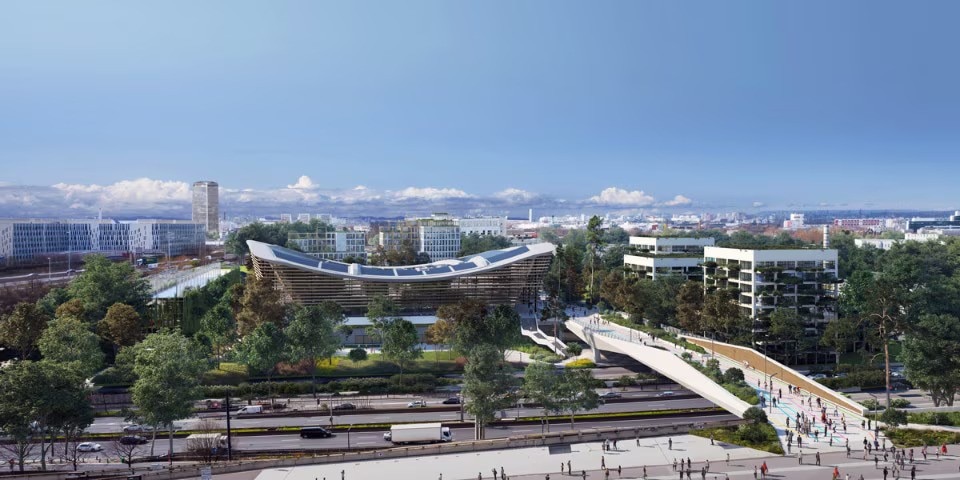
The bid that won Paris the right to host the XXXIII Olympic Games in 2017 was far from a showcase of glamor and grandiose projects. Exactly a century after the last games on French soil, Paris opted to move away from the sometimes delusional approach that characterized the London and Athens Olympics. While those events aimed to rejuvenate entire neighborhoods, they were criticized for non-virtuous gentrification and unforeseen costs. In response, Paris pursued a more restrained and environmentally conscious path, a strategy in line with the goals of the Paris Agreement for Climate Change and sustainability principles. Read more
“Sanremo è Sanremo”. But what is Sanremo?
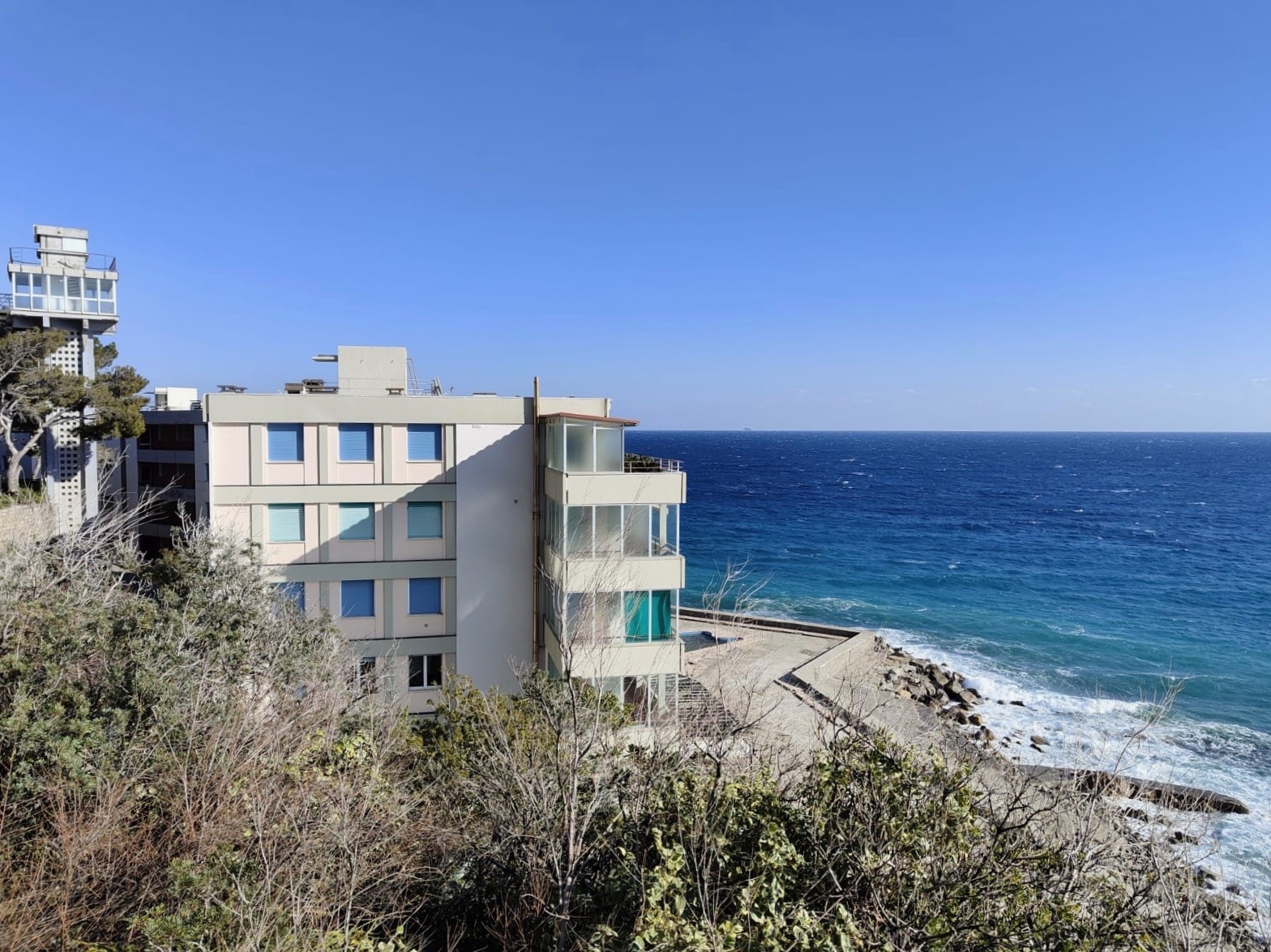
 View gallery
View gallery

Sanremo with its Festival-time floating extension, the Costa Smeralda cruise ship
Photo Giovanni Comoglio

The sea water swimming pool conceived in 1948 by Gio Ponti for the Royal Hotel
Photo Giovanni Comoglio

Via Matteotti, close to The Ariston theatre, the core of the communication machine
Photo Giovanni Comoglio

Sanremo with its Festival-time floating extension, the Costa Smeralda cruise ship
Photo Giovanni Comoglio

The sea water swimming pool conceived in 1948 by Gio Ponti for the Royal Hotel
Photo Giovanni Comoglio

Via Matteotti, close to The Ariston theatre, the core of the communication machine
Photo Giovanni Comoglio
An aerial view: palm trees, golden majolica-clad domes, transition to the city Casino interior where Loretta Goggi recklessly approaches a gambling table singing Io nascerò (I will be born). This is the specific 1986 TV scenario for the headlines of Festival di Sanremo, but it can be replicated quite easily, with more or less roulettes, until today, replaced at most by a more generous drone. It is in any case the most complete picture we can get of the city of Sanremo during the six-day Festival of Italian popular songs that makes this seaside town a temporary cultural capital of Italy. Read more
10. Wayúu self-built houses in the Colombian desert

La Guajira is one of the poorest and most remote regions of Colombia and the country’s largest indigenous reserve: here, we documented how indigenous architecture has adapted to an extremely harsh climate. Read more
Opening image: Nueva Venecia. Photo Kurt Hollander

Ethimo's latest collection is all about weaves
Inspired by the traditional craftsmanship of Eastern Spain and patios, the new collection designed by Studio Zanellato/Bortotto reimagines the aesthetics of comfort.
- Sponsored content

